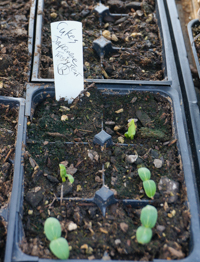
Earth Day! Such an opportunity to do something positive for our planet! Whether you recycle, upcycle, bicycle, reduce your footprint, make a footprint, go for a simple walk, plant a tree – so much we can do to celebrate another day of living on this incredible planet that supports life as we know it.
Sometimes I just have to step back in amazement that any of this exists at all!
That said, we really don’t need a holiday to remind us. It’s just a good excuse to get people together and do something positive. Sounds good to me. Mother Nature is always reminding us who’s really boss around here – whether it be by pelleting us with rain that hits us sideways or soothing us with one of those leisurely Sunday mornings when we sit outside sipping coffee, tilting our faces toward the sun, and inhaling the fragrance of spring…. ahhhh.
Ha! That last image is a nice little fantasy! Seriously, folks – our room is a mess and we’ve got some serious cleanin’ up to do!
Ok. But where do we start?
I mean, according to World Revolution, 3 billion people are living in poverty, severely malnourished, or outright starving; 30,000 children die every day from hunger and preventable diseases; we’ve already lost half our forests; nearly a quarter of mammal species and nearly half of our plant species are facing extinction; desertification and degradation threaten a quarter of the land on the planet; and we haven’t even talked about climate change, which could increase the Earth’s temp by a good 5 degrees or more, with associated cascading effects that I don’t have room to go into here.
Dang. That is probably the most depressing website I’ve looked at in a long time – and since they aren’t noting dates of their statistics, we can assume it has likely gotten worse. If you want profiles on what people are doing to make the world more sustainable (and I really doubt that “sustainable,” i.e., maintaining the status quo, is enough anymore), the World Watch Organization puts a more positive spin on things.
Still, the obvious fact remains: there are any number of ways we can do ourselves in, whether it be through man-made catastrophes, using up our resources, or failing to feed our own species, not to mention how we play together in the same sandbox.
So I am sorry to be such a downer, folks, but the reality is, our Earth – which supports our civilization – needs our help, or we can just kiss each other good-bye!
But wait – wait – this is supposed to be a POSITIVE blogpost. I started writing this thinking I would write about the bees and about how this beautiful little creature has the power to save civilization if each of us, in our own backyards, give it a little help. Did you realize that 70% of our crops are dependent on pollinators? And hey, when you get down to it, eating is kind of essential to our existence. Of course, I realize, not everyone wants to “keep” bees – I get that, too.
BUT, in the face of the world coming to an end, there IS a very simple thing each of us can do. It’s a defiant act. It is, in fact, revolutionary – in the sense that a revolution is something that turns around. And that is (although I have already given away the answer, drum roll, please….)
Plant a Seed.
Something so simple.
Something that brings joy, provides food, helps the bees, helps our planet.
And when it is all grown up, share it with your neighbor – and you can help humanity at the same time.
Thank you.
Happy Earth Day from Apis mellifera and me.
~*~


Addendum:
My Favorite Plants for Bees: I recently posted this list of plants we are currently growing at Barbolian Fields for honeybees and other pollinators – and yes, we have seeds (and possibly plants) available for many of these! Contact us!
Ultimate Resource: Attracting Native Pollinators: The Xerces Society Guide, Protecting North America’s Bees and Butterflies. In the Foreword, Dr. Marla Spivak says,
This book is much more than a resource on how to improve habitat for native pollinators. It is a step-by-step guide for changing our stewardship of the earth; it is a tangible way for people of all ages to make a difference. Active participation in this vital, grass-roots revolution is easy: Plant flowers. Sure, by creating floral and nesting habitat, bees, butterflies, and countless other wildlife species will prosper. But through this same simple effort, you will be ensuring an abundance of locally grown, nutritious fruits and vegetables. You will beautify our cities, roadways, and countryside. You will be helping to spread the word about the urgent need to reduce pesticide use, while at the same time creating habitat for beneficial insects that prey upon crop pests. You will be increasing natural diversity and ecological resilience through pollinator gardens, bee pastures, and flowering field borders that stabilize the soil, filter water runoff, and pack carbon into the roots of native prairie plants. For many of our earth’s ills, you will be part of the solution.
You might also like our earlier blogpost: “Spring Equinox: A Tipping Point”